Sophie Harvey, 18, from Greater Manchester, did a double take as she walked along her local high street last month. Three, six foot rainbow letters had been erected outside Bury Town Hall, displaying the word “NHS”. Last year, the town hall hosted a similar display with towering rainbow letters. They read “Pride”.
“Every time I pass the building I get more annoyed about it, especially because it’s the exact same design on both displays,” Harvey tells HuffPost UK.
Since then, she’s noticed a growing number of rainbow flags displayed by shops and pubs in her area, often alongside the slogan: “Thank you, NHS.”
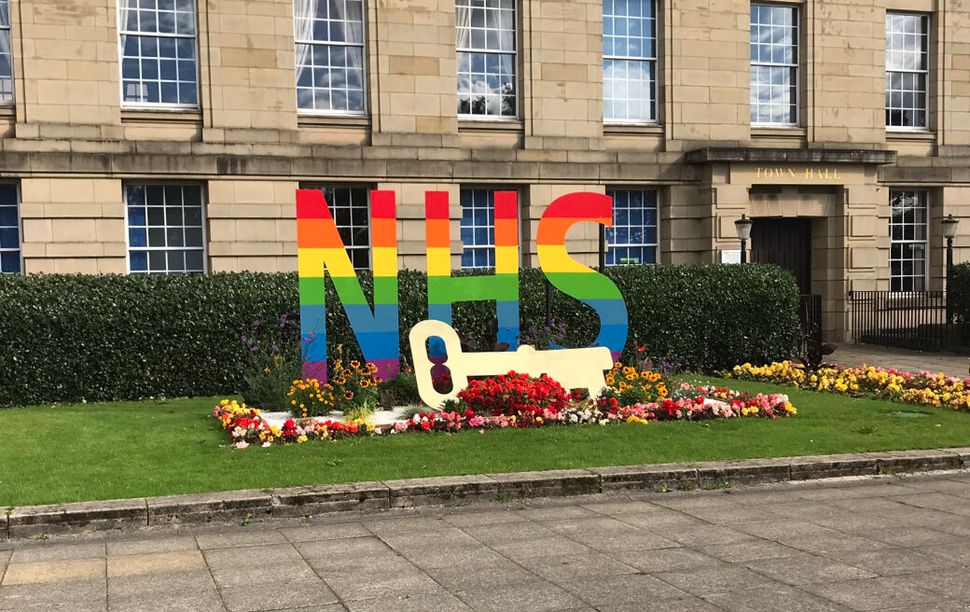
The fact that Bury Pride was cancelled this year due to Covid-19 – along with most other nationwide Pride events – adds salt to the wound.
“I first came out in 2016, and the gay flag became a huge part of my life because it was something that represented me and my struggles, and the struggles that the others in my community go through,” Harvey says.
“Seeing a flag that holds so much pain and passion be used for something entirely different is heartbreaking. It’s not just a rainbow to us, it’s the story of our people and our history.”

Harvey is one of many LGBTQ+ people who feel concerned, and in some cases, unsafe, due to this recent co-opting of the rainbow flag. Another vocal critic is the human rights campaigner Peter Tatchell, who has been on the front line of LGBTQ+ campaigning since the 1970s.
“The rainbow flag is a global symbol of the LGBTQ rights movement,” says Tatchell. “As Oscar Wilde once said: ‘Imitation is the sincerest form of flattery.’ But to adopt the exact same six-colour LGBTQ rainbow flag for the NHS looks like blatant cultural appropriation.”
Tatchell feels the LGBTQ+ community has been “robbed” of its symbol and is calling on the NHS to “devise their own unique symbol and flag”.
Alongside its history, he believes the mixed messaging around the flag’s multiple uses is confusing – to the queer community and the wider public.

“When businesses display the rainbow flag, are they celebrating the NHS or the LGBTQ community?” he says, describing corporations that have co-opted the flag as an NHS symbol as “cynical and exploitative”.
Rainbows are used as a symbol of hope within other communities, such as the baby loss community, which celebrates the ‘rainbow babies’ born to parents after miscarriage or stillbirth. The issue with the NHS flags during the pandemic, says Harvey, is that they mostly feature the six-stripe rainbow.
“I think a common misconception with the LGBTQ community is that we just claim anything with rainbows on it,” she says.
“There’s a huge difference between any old rainbow and the six-stripe flag, as the flag’s colours have individual and very important meanings behind them – the community values, if you will.”
The Pride flag dates back to 1978, and originally had eight stripes, when it was created by San Francisco-based queer artist Gilbert Baker, who purposely didn’t copyright the flag because he wanted it to be “owned by everyone”.
The design evolved over time and there are many variations, seen at Pride events and LGBTQ+ venues globally. But the best-known, six-stripe version of the rainbow Pride flag is thought to have been established in 1979, with the meaning of its colours largely recognised as red for life, orange for healing, yellow for sunlight, green for nature, blue for harmony and purple for spirit.
The association between rainbows and the NHS grew alongside the pandemic.
Back in March, Kezia Roberts, 42, from Leeds, posted a “rainbow trails” idea on Facebook. The idea was to display rainbow artwork in your window as a sign of community, in the midst of lockdown. Speaking to HuffPost at the time, Roberts said she got the idea from seeing a similar project launched by mums in Italy.
Her intention was to bring local children together, rather than celebrate key workers, but the drawings soon became a celebration of those on the frontline, with many people waving their creations during Clap for Carers on Thursday nights – and adding messages of thanks to the NHS.
It’s unclear how this morphed into the co-opting of the six-stripe flag, but one theory is that it may be linked to NHS Pride badges. Launched in 2019, these are worn by LGBTQ+ workers and allies within the NHS. Health Secretary Matt Hancock wore one at the height of the pandemic during the Downing Street daily briefings.
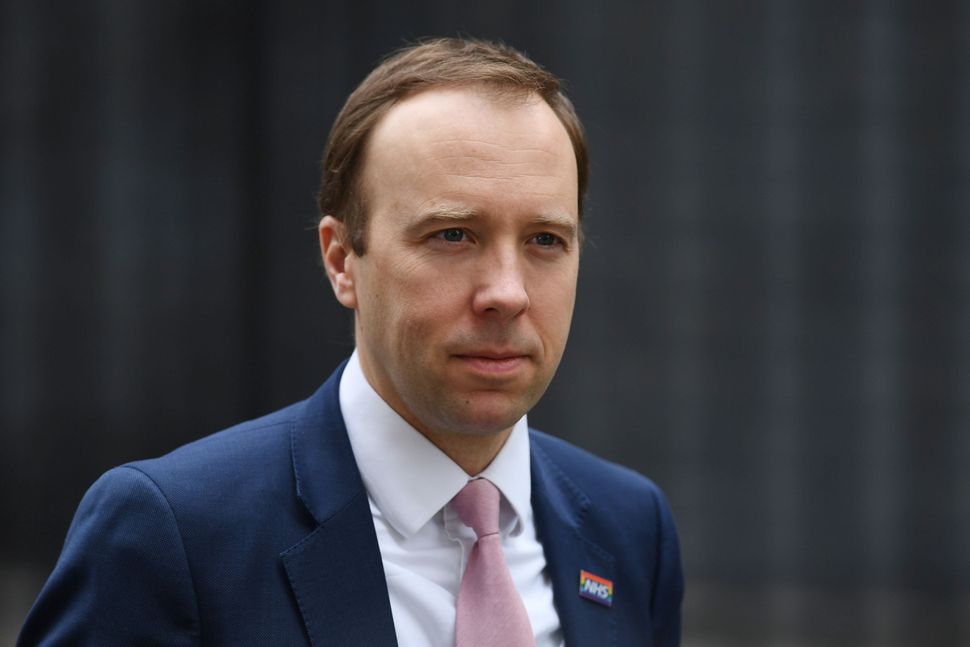
The conflation continued, with high profile public campaigns such as ‘Rainbows for NHS Nightingale’, which called for the public to submit photos for a display at the seven newly-built hospitals, designed to help with the pandemic. The campaign was started by members of the public, not the hospital itself.
Before long, ads appeared on sites including eBay, with companies selling so-called “Thank You NHS Flags”, with no mentions of LGBTQ+ Pride.
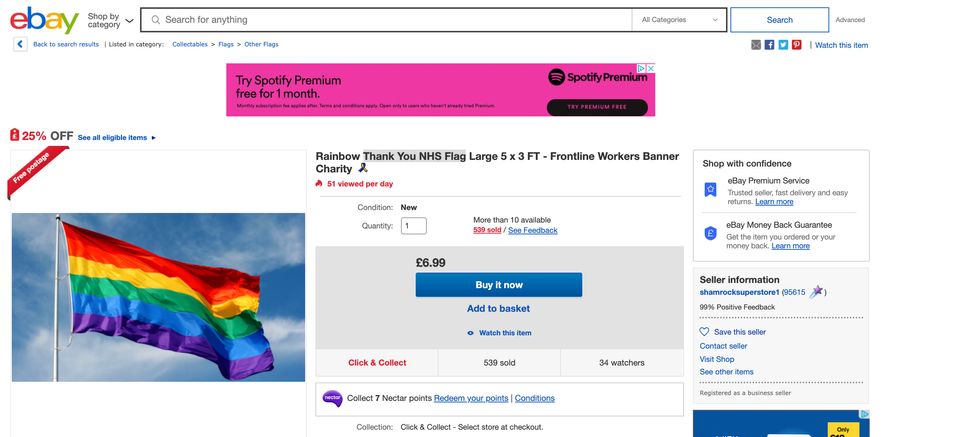
Simon Blake, 46, and based in Clapham, London, momentarily thought a new gay bar had opened in his neighbourhood when he spotted a new rainbow banner on a familiar street.
He was disappointed when he realised the banner was actually for the NHS, particularly at a time when so many queer spaces are under threat of closure. Flags are a symbol of safe spaces, he adds.
“We LGBT+ folk don’t often talk about, or perhaps even acknowledge to ourselves, how much of our lives are spent hyper aware of our surroundings. I have been beaten up and bottled in the past,” Blake tells HuffPost UK.
“A Pride flag meant a place of sanctuary. A place that welcomed us, perhaps a place where you could hold your partners hand or kiss in public if you wanted to. It is a symbol of love and solidarity in a world that is often unsafe and unkind for LGBT+ folk, even in London, even now.”

When contacted by HuffPost UK, an NHS spokesperson acknowledged the importance of the LGBTQ+ community and its connection with the Pride flag – but couldn’t confirm if the NHS had plans to encourage supporters to move away from using the flag or to develop an alternative symbol in future.
“The rainbow has been a positive symbol of hope for a long time and was used by members of the public to send messages of support to NHS staff during the Covid-19 pandemic,” said the spokesperson, “and while it is of course possible for the rainbow and the Pride Flag to exist side by side, it is important that the significance of the Pride Flag to the LGBT+ community continues to be recognised and respected.”
The statement continued: “We take pride in the diversity of our NHS workforce and the fact that our health service is there for everyone, whatever their race, gender or sexuality, and every part of our NHS must be a place where LGBT+ people are respected – including both staff and patients.”
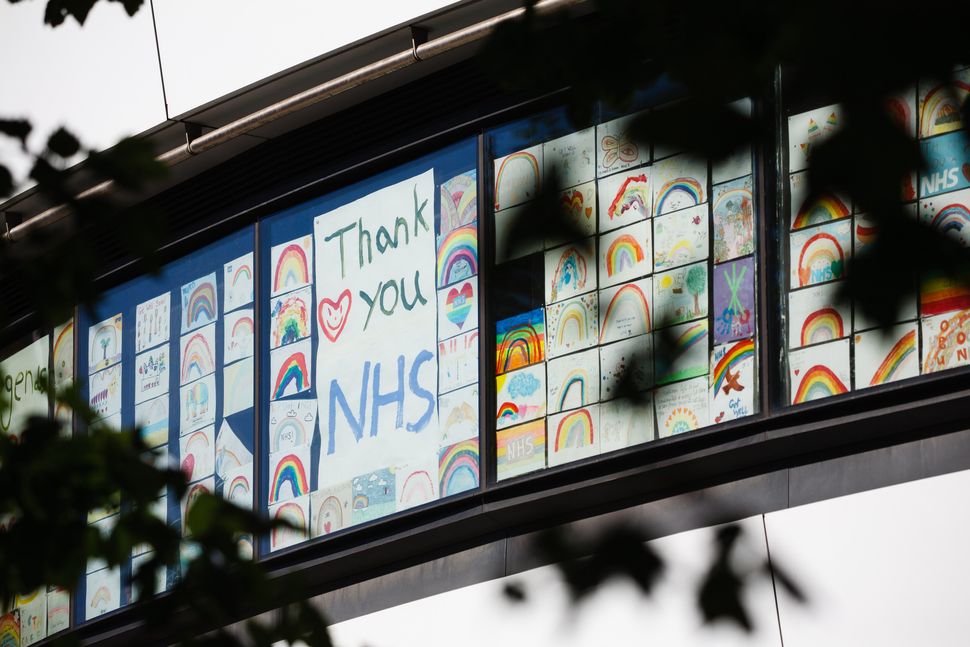
The dual use of the flag provokes mixed feelings in healthcare professionals who belong to both communities, such as trainee GP Dr Hannah Barham-Brown.
“The rainbow is a symbol of inclusion, so I don’t fundamentally have a problem with it being used by the NHS, so long as the LGBTQ+ community are genuinely supported throughout the organisation,” says Dr Barham-Brown, 33 and based in Leeds. “Our community will keep using it regardless, whereas I’d expect the NHS will slowly stop using it over the coming months and years.”
Dr Barham-Brown doesn’t want criticism to discourage NHS workers from wearing the rainbow badge. “The badge is so important, not just for my colleagues, but for my patients,” she adds. “We know that LGBTQ+ patients are more reluctant to seek healthcare due to negative attitudes they may encounter, and so the badge worn by NHS staff symbolises a safe space for them.”
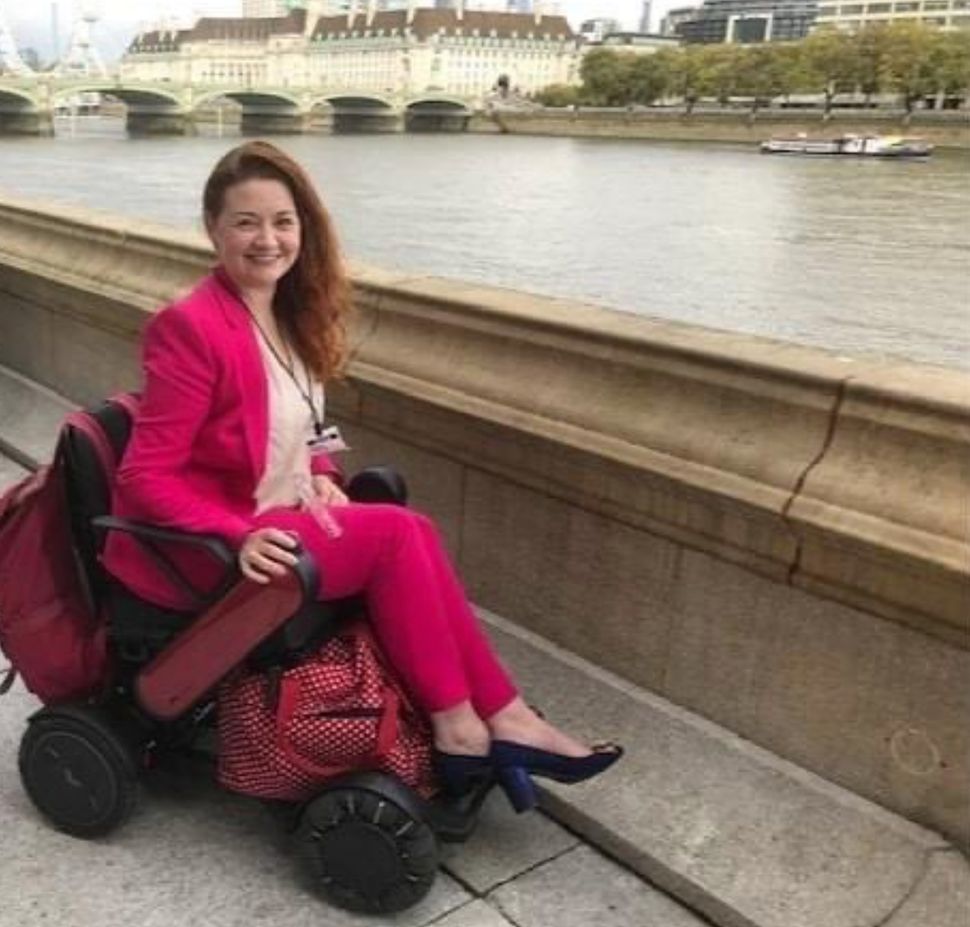
Simon Blake, who is deputy chair at Stonewall, the campaigning charity for lesbian, gay, bi and trans people, says that one solution would be the LGBTQ+ community transitioning to the ‘Progress’ flag instead of the six-stripe rainbow.
This flag was created by designer Daniel Quasar, who launched a kickstarter to get his idea off the ground. The flag includes a triangle with light blue and pink stripes for trans allyship, as well as black and brown stripes to support marginalised LGBTQ+ people of colour.
Use of the Progress flag would mean LGBTQ+ people could more easily identiy safe spaces, Blake suggests, especially during a period when the UK public is still widely using the six-stripe rainbow to celebrate the NHS.
“I love that the rainbow flag is being used to support the NHS. The workers and the institution so deserves our full respect,” he tells HuffPost UK.
“For me an inclusive anti-racist, trans inclusive LGBTQ movement now needs to adopt the Pride Progress flag. It makes more people feel included and welcome, and that for me is so important.”
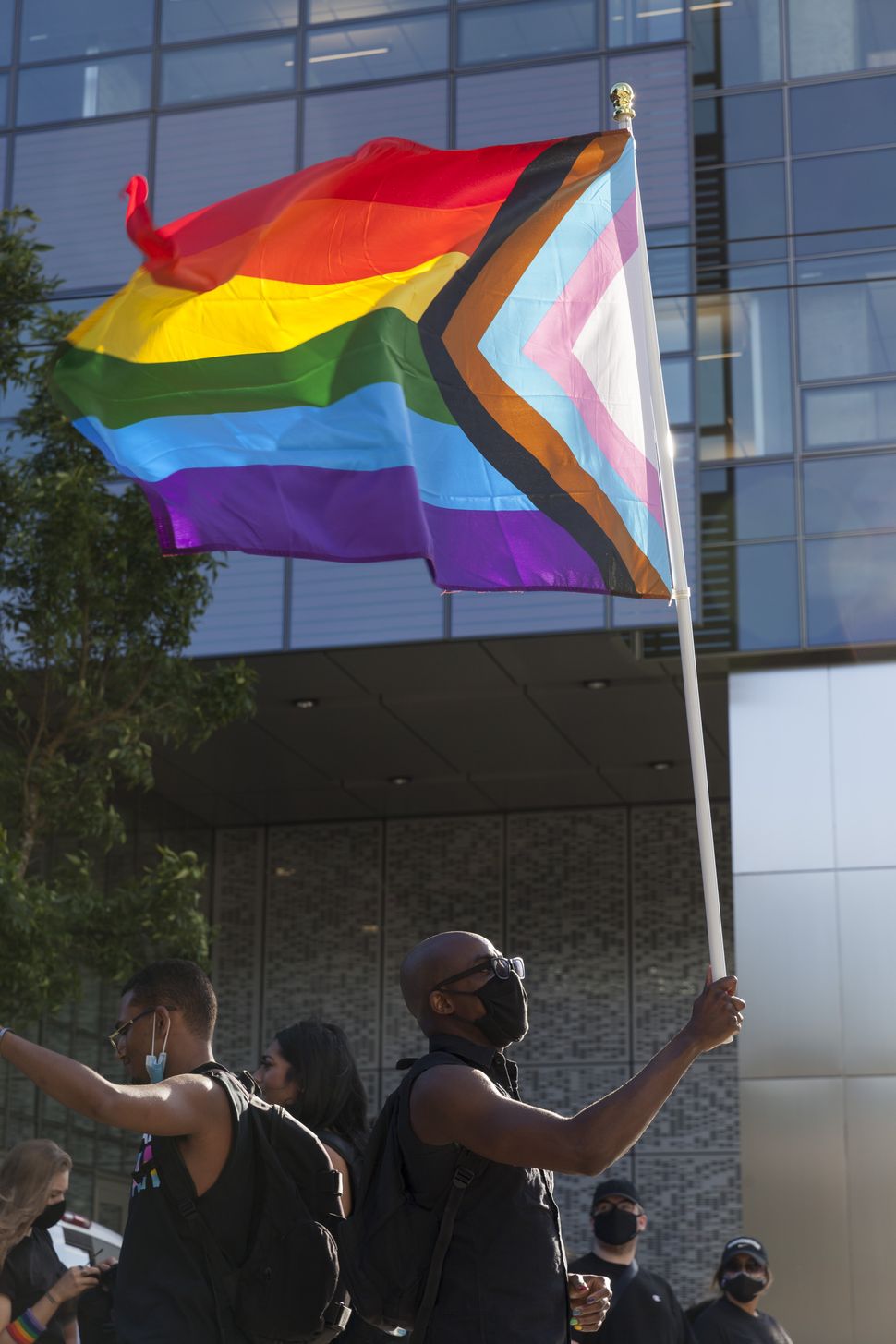
Amelia Vidler, 22, from Herne Bay in Kent, agrees that the Progress flag is a good idea, but doesn’t see why the queer community should have to change their flag right now just because of the NHS – but that, they should be free to change and evolve in their own time. “It’d be weird to wish for us to change instead of the newcomer in the scenario,” she says, “considering the lozenge logo was the foreground of NHS branding for years!”
She adds: “It would definitely be nice if either the NHS as a whole could acknowledge the queer community whilst continuing to use the rainbow or perhaps evolve their symbol.”
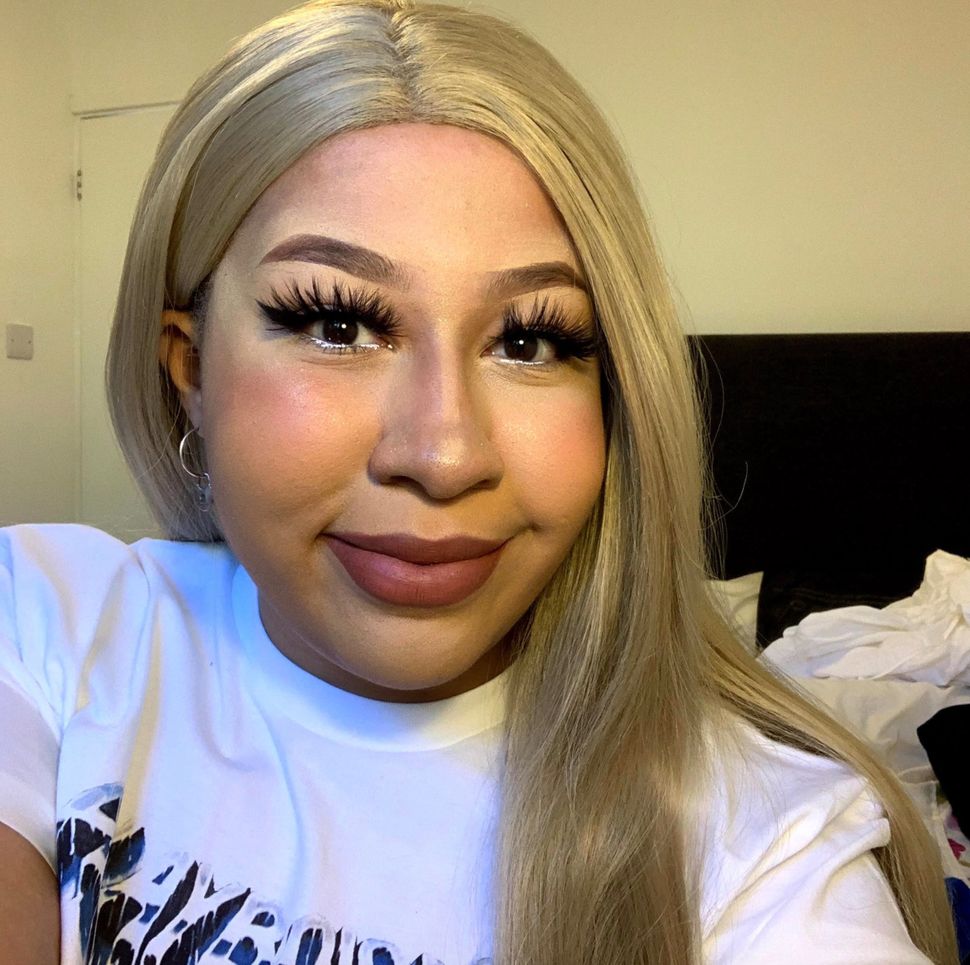
TV doctor, columnist and former Strictly Come Dancing contestant Dr Ranj Singh believes there may be space for both flags, provided the roots of the rainbow flag are always acknowledged.
“Just as this pandemic will change people’s behaviour and outlook for some time to come, I think the rainbow will continue to be a symbol of unity, hope and thanks for a while still,” he says.
“It’s nice to be reminded of that resilience, especially for the younger ones in society, but we must never forget why and where this symbol originated and how it is different from other similar imagery.”

Jade Anouka, a bisexual actor whose feature film Her & Her was part of the Last Frame Queer Womxn Fest, agrees with Peter Tatchell that it’s incongruous to conflate the values of the NHS with the queer community, even though there are parallels.
“I don’t think I could trust what the flag stands for anymore,” she says. “Seeing a rainbow flag outside of a pub [was] a sign that LGBT people are welcomed there. Let’s not pretend that we are welcomed everywhere – so the rainbow flag can be really important.”
Anouka has heard reports of openly homophobic people with rainbow flags outside their houses in support of the NHS, and says this makes her fearful.
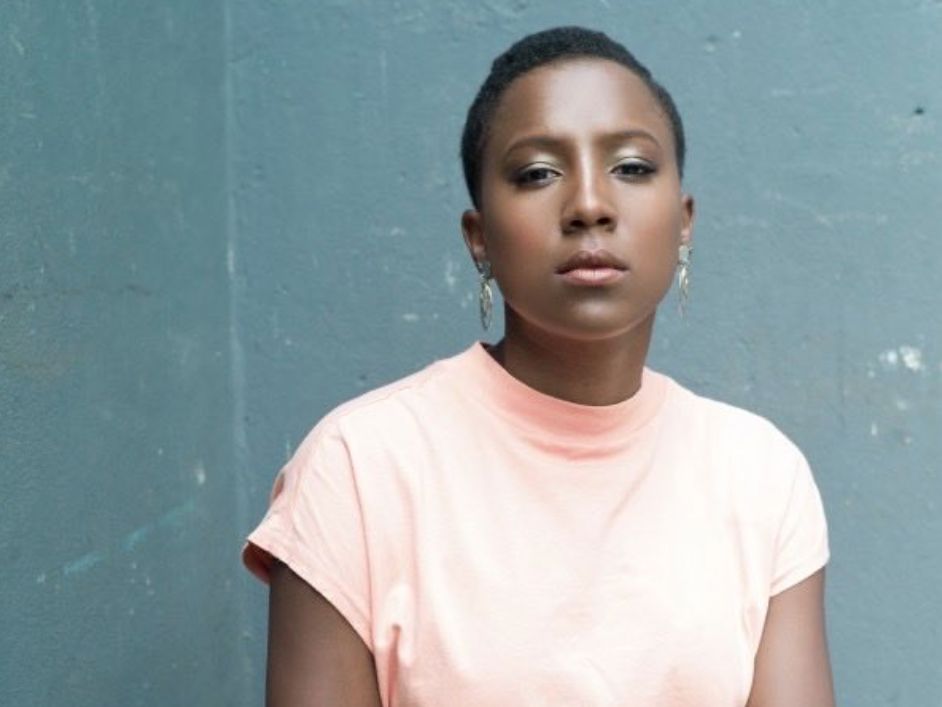
Her issue isn’t with the NHS, Anouka says, but with the culture of appropriation that has developed. “I have so much respect for the NHS and the NHS staff who have worked on the front line through Covid and are still doing it, putting their lives at risk to save the nation. But who decided to take the Pride flag and make it an NHS thing?” she asks.
So, what next? The rainbow flag has had more exposure during the pandemic than ever before. Some are hopeful this has made the public more familiar with its use in an LGBTQ+ context, too – and that it might be creating more allies.
“Because of the pandemic use of the rainbow symbol, and the positive reaction that little ones have when they see it, I think it’s lovely that they react the same way to the Pride symbol,” says Dr Ranj. “That’s got to be a good thing.”
The question of the Progress flag hangs in the balance – a live issue the queer community continues to grapple with. But if we are still living through the pandemic in a year’s time, will the NHS still be associated with the vibrant multicolours of the six-stripe rainbow too?
“In all probability, the use of the rainbow flag for the NHS will dissipate over time and we can fully reclaim it,” suggests Tatchell, who reckons it’s a compliment that the six-stripe rainbow has become so commonplace. “It has made the UK feel very LGBT-friendly, even if many people were displaying the flags to express solidarity with the NHS, rather than with LGBTs,” he says.
“Many of them must have known that the rainbow flag is a LGBTQ symbol. So the fact they displayed it regardless suggests that they feel no embarrassment with being potentially mistaken as supporters of the LGBTQ cause. That’s progress.”

